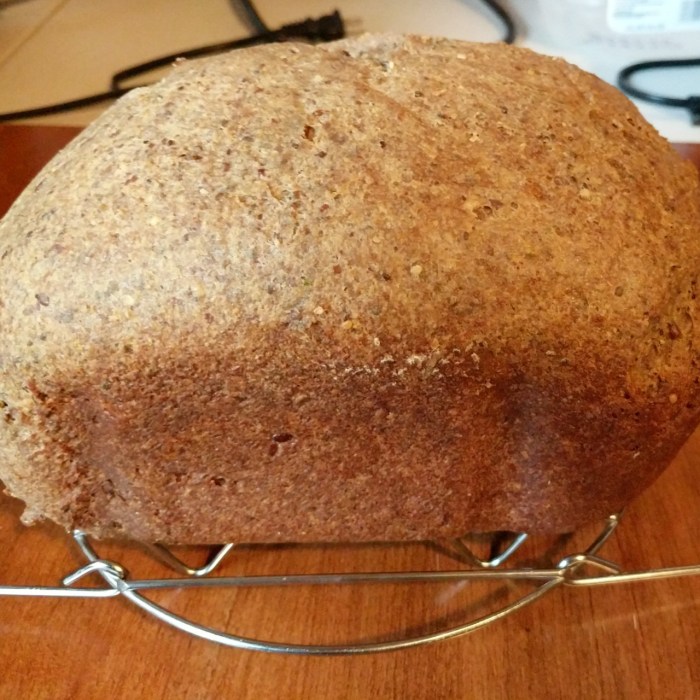Welcome to the world of almond flour low carb recipes, where culinary creativity meets nutritional well-being. In this comprehensive guide, we’ll explore the remarkable properties of almond flour, unravel its versatility in low-carb cooking, and present a tantalizing collection of recipes that will redefine your mealtimes.
From the nutritional benefits of almond flour to the unique cooking techniques it demands, this guide is your ultimate companion for unlocking the potential of this remarkable ingredient. Get ready to embark on a culinary journey that will nourish your body and delight your taste buds.
Almond Flour Properties
Almond flour, made from finely ground almonds, is a popular low-carb alternative to traditional wheat flour. It’s packed with nutrients and offers several health benefits.
Almond flour is a rich source of healthy fats, protein, and fiber. It’s also low in carbohydrates, making it an excellent choice for people following a low-carb or ketogenic diet.
Nutritional Benefits
- High in healthy fats:Almond flour contains mostly monounsaturated and polyunsaturated fats, which are beneficial for heart health.
- Good source of protein:Almond flour is higher in protein than most other flours, making it a filling and satisfying ingredient.
- Rich in fiber:The fiber in almond flour helps promote digestive health and can help lower cholesterol levels.
- Low in carbohydrates:Almond flour is very low in carbohydrates, making it a good choice for people with diabetes or those following a low-carb diet.
Nutritional Comparison
| Nutrient | Almond Flour | Wheat Flour |
|---|---|---|
| Calories | 640 | 364 |
| Carbohydrates | 21g | 75g |
| Protein | 24g | 12g |
| Fat | 53g | 2g |
| Fiber | 12g | 3g |
Low-Carb Almond Flour Recipes
Incorporating almond flour into your low-carb diet opens up a world of culinary possibilities. This versatile ingredient adds a nutty flavor and a boost of healthy fats to your meals, making them both satisfying and nutritious.
To help you get started, we’ve compiled a diverse collection of low-carb almond flour recipes, organized into convenient categories. From breakfast favorites to indulgent desserts, there’s something to suit every craving.
Breakfast
- Almond Flour Pancakes: Fluffy and satisfying, these pancakes are a great way to start your day.
- Almond Flour Waffles: Crispy on the outside, tender on the inside, these waffles are perfect for a weekend brunch.
- Almond Flour Oatmeal: A warm and comforting breakfast option that’s packed with fiber and healthy fats.
Lunch
- Almond Flour Pizza Crust: Create your own low-carb pizzas with this crispy and flavorful crust.
- Almond Flour Tacos: Fill these crispy taco shells with your favorite fillings for a satisfying lunch.
- Almond Flour Quesadillas: A quick and easy lunch option that’s perfect for busy weekdays.
Dinner
- Almond Flour Chicken Nuggets: Crispy and flavorful, these nuggets are a healthier alternative to traditional chicken nuggets.
- Almond Flour Meatloaf: A classic comfort food made with a tender and flavorful almond flour base.
- Almond Flour Shepherd’s Pie: A hearty and satisfying dish with a creamy mashed cauliflower topping.
Desserts
- Almond Flour Cookies: Soft and chewy, these cookies are a guilt-free way to satisfy your sweet tooth.
- Almond Flour Brownies: Fudgy and decadent, these brownies are perfect for chocolate lovers.
- Almond Flour Cheesecake: A creamy and luscious cheesecake with a crunchy almond flour crust.
Cooking Techniques with Almond Flour
Almond flour possesses unique cooking properties that distinguish it from traditional wheat flour. Understanding these properties and employing appropriate techniques are crucial for successful baking and cooking with almond flour.
One of the key characteristics of almond flour is its high fat content, which imparts a rich and nutty flavor. However, this also means that almond flour tends to absorb more liquid than wheat flour. To compensate for this, it is essential to adjust the liquid content in recipes when using almond flour.
Tips for Working with Almond Flour
- Use more eggs or other binding agents:Eggs help to bind the ingredients together in almond flour recipes. If a recipe calls for one egg, consider using two or three eggs instead.
- Add additional liquid:Depending on the recipe, you may need to add more liquid, such as water, milk, or cream, to achieve the desired consistency.
- Mix thoroughly:Almond flour can be clumpy, so it is important to mix the ingredients thoroughly until they are well combined.
- Use a fine-grained almond flour:A finer grind will produce a more even texture in your baked goods.
- Don’t overmix:Overmixing can result in tough and dense baked goods.
Health Benefits of Almond Flour
Incorporating almond flour into your diet may offer several potential health benefits. This versatile ingredient is packed with nutrients and has been linked to improvements in various aspects of health.
Let’s delve into the specific health benefits associated with consuming almond flour, supported by scientific studies and research articles.
Nutrient-Rich
- Almond flour is an excellent source of essential nutrients, including fiber, protein, healthy fats, vitamins, and minerals.
- It is particularly rich in dietary fiber, which supports digestive health, promotes satiety, and helps regulate blood sugar levels.
Heart Health
- Studies suggest that consuming almond flour may benefit heart health.
- It contains monounsaturated and polyunsaturated fats, which can help lower LDL (bad) cholesterol and raise HDL (good) cholesterol.
- Additionally, almond flour is a good source of fiber, which has been shown to reduce the risk of heart disease.
Weight Management
- Almond flour is a filling and satisfying food, which can aid in weight management.
- Its high fiber content promotes satiety and helps reduce overall calorie intake.
- Furthermore, almond flour is a good source of protein, which also contributes to feelings of fullness.
Blood Sugar Control
- Almond flour has a low glycemic index, meaning it releases sugar slowly into the bloodstream.
- This helps regulate blood sugar levels, making it a suitable option for individuals with diabetes or prediabetes.
- Additionally, the fiber in almond flour can help slow down the absorption of sugar from other foods.
Versatility of Almond Flour
Almond flour’s culinary applications extend far beyond traditional baking. Its versatility allows it to seamlessly integrate into various dishes and cuisines, from savory to sweet, adding a unique nutty flavor and nutritional value.
In the realm of savory cooking, almond flour excels as a coating for meats, fish, and vegetables, creating a crispy and flavorful crust. It also serves as a base for meatballs, burgers, and meatloaves, lending a moist and tender texture while reducing the need for bread crumbs or fillers.
In Baking
Almond flour’s baking capabilities are equally impressive. It can be substituted for wheat flour in a 1:1 ratio in most recipes, resulting in a moist, crumbly texture that is particularly well-suited for cakes, cookies, and muffins. Almond flour also adds a subtle sweetness to baked goods, making it a great choice for those seeking a healthier alternative to refined sugars.
In Sauces and Dressings
Beyond baking, almond flour finds its way into sauces and dressings. It can be used as a thickener for soups, stews, and gravies, adding a creamy texture without the heaviness of dairy or wheat-based thickeners. Almond flour also makes a delicious and nutritious base for salad dressings, dips, and spreads.
Almond flour low carb recipes offer a delicious and nutritious way to satisfy your cravings without sacrificing your health goals. Whether you’re looking for a quick and easy snack or a hearty meal, there are countless recipes available to tantalize your taste buds.
From fluffy pancakes to decadent desserts, almond flour’s versatility makes it a perfect choice for those following a low carb lifestyle. For a protein-packed treat, try out this no bake protein bar recipe that combines the benefits of almond flour with other nutrient-rich ingredients.
It’s the perfect way to refuel after a workout or curb your hunger between meals. So, embrace the culinary possibilities of almond flour low carb recipes and enjoy a healthy and satisfying way to nourish your body.
In Flatbreads and Pizza Crusts, Almond flour low carb recipes
The versatility of almond flour extends to flatbreads and pizza crusts. When combined with other gluten-free flours, it creates a pliable dough that can be rolled out or pressed into a pan. The resulting crust is crispy on the outside and chewy on the inside, providing a satisfying base for your favorite toppings.
Almond Flour Substitutes: Almond Flour Low Carb Recipes

Almond flour is a popular gluten-free and low-carb alternative to wheat flour. However, it can be expensive and not always readily available. If you don’t have almond flour on hand or are looking for a more budget-friendly option, there are several suitable substitutes you can use.
The best almond flour substitute depends on the specific recipe and your dietary preferences. Here’s a table comparing the characteristics and uses of different almond flour substitutes:
Coconut Flour
- Finer texture than almond flour
- Higher in fiber and lower in carbs
- Can be used in a 1:1 ratio to replace almond flour in most recipes
- May require additional moisture in the batter or dough
Sunflower Seed Flour
- Similar texture to almond flour
- Lower in carbs and higher in protein
- Can be used in a 1:1 ratio to replace almond flour in most recipes
- May have a slightly nutty flavor
Hazelnut Flour
- Similar texture and flavor to almond flour
- Higher in calories and carbs
- Can be used in a 1:1 ratio to replace almond flour in most recipes
- May have a slightly sweeter flavor
Oat Flour
- Coarser texture than almond flour
- Higher in carbs and lower in fat
- Can be used in a 1:1 ratio to replace almond flour in most recipes
- May require additional moisture in the batter or dough
Last Point

As we conclude our exploration of almond flour low carb recipes, it’s evident that this ingredient is a culinary game-changer. Its nutritional prowess, versatility, and ability to transform everyday dishes into low-carb masterpieces make it an indispensable tool for health-conscious foodies.
Embrace the power of almond flour and let it inspire you to create delicious and satisfying meals that will fuel your body and enhance your well-being.








